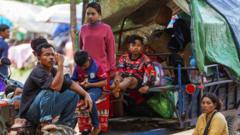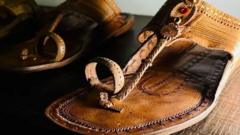In Romania, a traditional garment known as the “ie” or embroidered blouse, typically worn by rural women, has escalated beyond fashion into a contentious political symbol. The blouse has been rebranded by nationalist figures, whose affinity for this folkloric attire reveals a deeper entanglement with questions of cultural identity.
Leadership within nationalist parties, particularly figures such as Diana Sosoaca, has pivoted toward embracing this garment as a emblem of national identity and pride. Sosoaca, a prominent far-right politician, is rarely seen without her embroidered blouse, which she integrates seamlessly into her political persona. Similarly, George Simion, a recent candidate in the failed presidential elections, and ultranationalist Calin Georgescu, who had previously captured attention with his campaigns featuring horseback appearances in the blouse, underscore the garment’s rising prominence in nationalist rhetoric and imagery.
Conversely, a liberal critique has emerged arguing that the adoption of the blouse by nationalists is a form of cultural appropriation. Critics contend that the blouse, integral to Romania's rural heritage, should remain a shared cultural artifact rather than a tool for political signaling. They express concern that the garment is being weaponized to draw lines between those deemed authentic patriots and those perceived as outsiders or less committed to national identity.
Artisans and local businesses, such as those at the National Village Museum in Bucharest, navigate this new landscape with trepidation, as the garment, celebrated for its intricate craftsmanship, becomes associated with political ideologies. The sewing process, often taking months to create the detailed embroidery, further adds layers of meaning to the blouse, complicating its newfound status among political circles.
As the interplay between cultural identity and politics unfolds in Romania, the “ie” serves as a poignant case study on how traditional symbols can be reinterpreted and repurposed, leading to polarizing debates about authenticity, ownership, and national pride in a rapidly changing societal context.


















